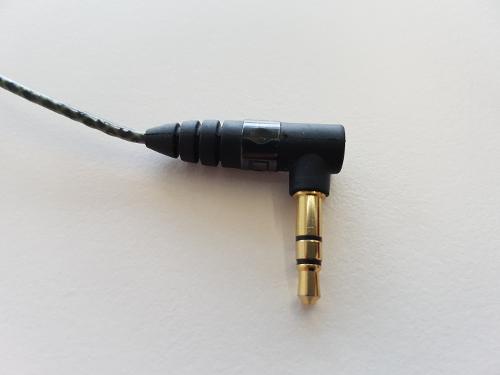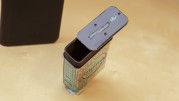
Introduction
Up for review are a pair of Sennheiser’s IE800 dynamic driver in-ear monitors. They were first released in 2012 at around $1000, but pricing has fallen to more reasonable levels, with Sennheiser’s MSRP at $800 and used pricing on the market under $500. There was a lot of controversy due to the cable design, dynamic drivers, price, and the proliferance of fakes on the market. Are they still worth picking up? Let’s take a further look.
I purchased this pair of IE 800s on Reddit after coming across them for a price I couldn’t refuse. I’ve had these since January, but refrained from commenting on them as they were shipped with small eartips instead of the mediums as advertised, which did not fit properly for me.
Thankfully, I was able to source replacement medium eartips from Sennheiser Canada directly for ~$20 for one pair (yikes). They were on backorder and had to come in from Germany first, resulting in a 3 week lead time. Really appreciate the seller Renew Logic for covering the cost on the replacement tips. Top notch customer service.
Have been using these for the past few days with the correct sized tips, so here we go…
Build/accessories
I received the IE800s with only one pair of tips, the leather carrying case, and the earwax cleaning tool. New, the IE800s come with the above along with a box and 4 sets of silicone eartips ranging from small to large sizes.
The finish and build quality is definitely in line with a high end product. The IE800s have a ceramic finish, metal driver vents, and a kevlar cable. The housings are nice and smooth to the touch and are surprisingly durable, showing no signs of wear and tear after a month of use by me and use by the previous owner of these. The leather case is also really nicely finished, with high-density foam, even stitching, and fine leather quality. The cleaning tool provided does not have a brush like ones included with other IEMs, but this is understandable given that the IE800s have two wire screens (one on the IEM, and one on the eartip) to prevent earwax buildup.
Ultimately, no complaints from me on this end.
Usability
I’ll start off this section of the review by addressing the cable design, which is the big elephant in the room. Typically, higher-end IEMs have a detachable cable terminated at the IEM housings. However, Sennheiser decided to have the cable for the IE800s hardwired at the housings, with the cable terminated at the Y-splitter using a 2.5mm connector. This means that if your cable has issues near the connection to the housing, then you have to rewire the IEMs. I would imagine Sennheiser did this due to the small size of the driver housings. All other IEMs around this size I’ve come across have fully hardwired cables, so for Sennheiser to even offer a semi-detachable solution is honestly better than nothing.
To be perfectly frank, I don’t really consider this an issue. Out of all of the 20 or so IEMs I’ve owned and flipped throughout the years, I haven’t yet come across problems related with the cables. I don’t particularly baby my IEMs either, just shoving them into my pant pockets when not in use. If you consider its most relevant rival, the AKG K3003, the IE800 wins by at least having a semi-detachable cable.
Otherwise, the IE800s are great to use as long as you wear them cable down. The small size means they almost disappear in your ears and there’s no discomfort relating to the housing shape (looking at you, Andromedas). Isolation is pretty good, but is probably worse than a BA setup due to the smaller housings. Source matching is also less problematic then something like the Campfire Andromeda and its crazy impedance curve.
My one complaint on usability does relate to the eartips, another controversial IE800 topic. They are a proprietary design with a included mesh earwax filter, which click on to the housing. They do a great job of keeping earwax out of the IE800s, but can definitely be a pain to replace as you either have to get replacements directly from Sennheiser for an arm and a leg or buy knock-off eartips from Aliexpress. Definitely not many options for tip rolling on these unless you want to start hacking away and doing your own chop job.
Sound
Sennheiser’s always really stuck to dynamic drivers (Orpheus excepted) and their expertise really shows in the sound quality of the IE800s. I read on one review that these sound like the old UE Triple-Fi 10s but with an additional degree of refinement. Given that the TF10s were THE old guard for a V-shaped sound signature, I’m inclined to agree. One of the best parts about the IE800’s sound signature is the bass. These deliver a major bass punch for an IEM but without the bloatiness of lower-end gear. Sub-bass extension is also among the best I’ve heard.
Despite the bass emphasis, the mids don’t suffer at all in comparison in terms of quality. Vocals are very clear and detailed, only lacking a bit of lushness which the cream of the cream midrange IEMs (TG334s, Andromedas) have.
Highs are well-extended on the IE800s, which help with the sense of air along with crispness in hi-hats and other instruments. The highs do emphasize sibilance, which can be noticeable on pop vocals. However, it’s not so bad to be painful to listen to, unlike the Sony EX1000s.
Soundstage is pretty wide, but not so deep relative to the best offerings on the market. Running these from a more powerful output than a phone do help in terms of opening everything up. Clarity is definitely among the upper end of the IEMs I’ve sampled.
All in all, the IE800s really represent one of the best V-shaped sound sigs you can get on the market. They’re a great companion if you mainly listen to hip-hop and EDM, but can more than hold their own in other genres due its overall technical capability.
Some quick comparisons
Quick comparisons to other IEMs I’ve owned around similar performance levels are as follows. All of these play really in the same “league”.
Sony EX1000: I definitely prefer these over the Sonys as the treble peak on that one was unlistenable for me. I think these have the sound signature I would EQ the EX1000s to, and they are just so much easier to use. EX1000 probably has a bigger soundstage though.
FitEar TG334: TG334s are a bit easier to listen to due to lower treble levels. They also have better mids and a tad more clarity. IE800s have more bass slam though.
Campfire Andromeda: Campfires are more balanced but I’d say better all around with exception for bass slam. Less troublesome treble, sweeter mids, tighter bass, and bigger soundstage. Hiss can be a bitch on them though.
Summary
As you can see, the IE800s play in a pretty rarified field for me. So, at the end of the day, how much did I pay for these? $195. These are a definitely a no brainer at that price. I think that these are a pretty poor value proposition at the original $1000, good value proposition at $500, and an insane value proposition around the $250 mark. Ultimately, my greatest stamp of approval for these is that after I’ve got them, the IE800s have had more head-time than the Andromedas due to its comfort, ease of use and fun sound signature. Hope you guys have enjoyed the review!
Impromptu photoshoot at my office below






Make sure to look out for this split when determining if your example is authentic. A legit pair will have a break between the connector like above.

Also, on a legit pair, the 'dimple' above on the plug will be slightly bigger and more defined.

























































